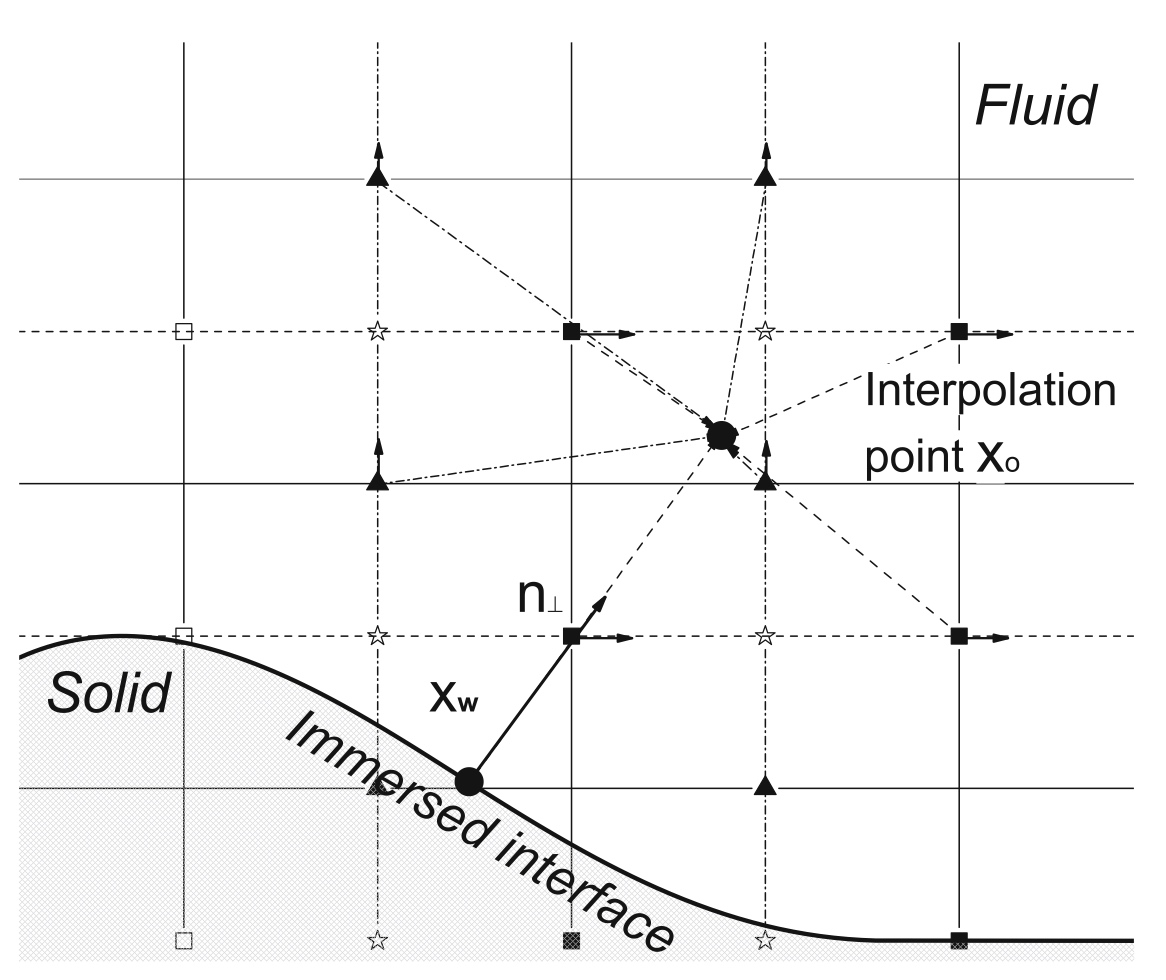Z.L. Chen, S. Hickel, A. Devesa, J. Berland, N.A. Adams (2013)
Theoretical and Computational Fluid Dynamics 28: 1-21. doi: 10.1007/s00162-012-0286-6
We propose and analyze a wall model based on the turbulent boundary layer equations (TBLE) for implicit large-eddy simulation (LES) of high Reynolds number wall-bounded flows in conjunction with a conservative immersed-interface method for mapping complex boundaries onto Cartesian meshes. Both implicit subgrid-scale model and immersed-interface treatment of boundaries offer high computational efficiency for complex flow configurations.
The wall model operates directly on the Cartesian computational mesh without the need for a dual boundary-conforming mesh. The combination of wall model and implicit LES is investigated in detail for turbulent channel flow at friction Reynolds numbers from Reτ = 395 up to Reτ =100000 on very coarse meshes. The TBLE wall model with implicit LES gives results of better quality than current explicit LES based on eddy viscosity subgrid-scale models with similar wall models. A straightforward formulation of the wall model performs well at moderately large Reynolds numbers. A logarithmic-layer mismatch, observed only at very large Reynolds numbers, is removed by introducing a new structure-based damping function.
The performance of the overall approach is assessed for two generic configurations with flow separation: the backward-facing step at Reh = 5000 and the periodic hill at ReH = 10595 and ReH = 37000 on very coarse meshes. The results confirm the observations made for the channel flow with respect to the good prediction quality and indicate that the combination of implicit LES, immersed-interface method, and TBLE-based wall modeling is a viable approach for simulating complex aerodynamic flows at high Reynolds numbers. They also reflect the limitations of TBLE-based wall models.

